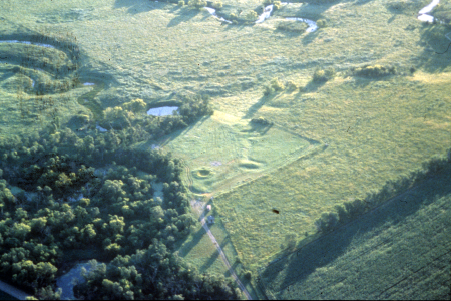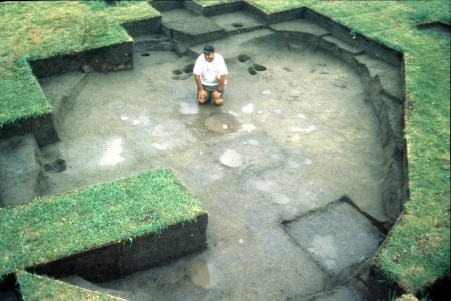Last updated: June 29, 2018
Article
A Case of Mistaken Identity Corrected

National Park Service.
Largely for that long-held belief, North Dakota acquired the property in 1937 to preserve it as a state historic site. In recent years, however, intensive archeological research has shown that the village was abandoned hundreds of years before La Vérendrye passed through the region in 1738.
Such a revelation could well have provided justification for withdrawal of the NHL designation, as it is now established that Menoken is not what its statement of significance initially claimed it to be. Nevertheless, consultation with authorities on prehistory of the region and the State Historic Preservation Office garnered consensus that the site is probably more important for what it can reveal about life in the past.
Therefore, the National Park Service contracted with Paleo Cultural Research Group of Flagstaff, Arizona, to initiate a new study of Menoken’s significance. When the merits of the Menoken Indian Village Site were reconsidered in 2004, its status as an NHL was upheld—but for different reasons. Menoken is now recognized as a nationally significant site, not for a spurious association with exploration of the continent, but for the unique scientific information it has produced and still contains.
Therefore, the National Park Service contracted with Paleo Cultural Research Group of Flagstaff, Arizona, to initiate a new study of Menoken’s significance. When the merits of the Menoken Indian Village Site were reconsidered in 2004, its status as an NHL was upheld—but for different reasons. Menoken is now recognized as a nationally significant site, not for a spurious association with exploration of the continent, but for the unique scientific information it has produced and still contains.

National Park Service.
The Menoken Indian Village Site offers an object lesson in how local lore—and even the work of early scholars—can lead us astray and be disproved through further study. This is especially true of archeological sites that are restudied with newly available techniques and in light of cumulative research carried out at related sites. Even ideas about what is significant may change in response to advances in archeological theory. Accordingly, documentation improvement projects for existing NHLs are often worthy undertakings.
Originally published in "Exceptional Places" Vol. 3, 2008, a newsletter of the Division of Cultural Resources, Midwest Region. Written by Vergil E. Noble.
